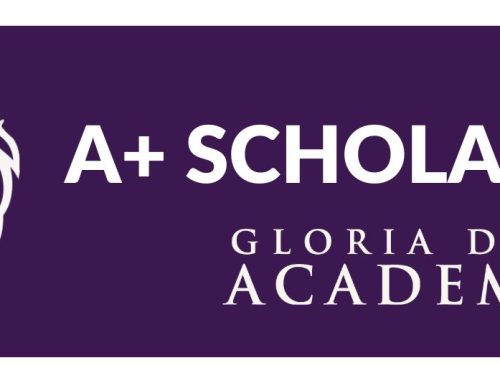In recent years, cognitive scientists have shown that a few simple study habit tips can reliably improve what matters most: how much a student learns from studying. The findings can help anyone, from a fourth grader doing long division to a retiree taking on a new language. But they directly contradict much of the common wisdom about good study habits, and they have not caught on.
Study Habit Tips: Move Around
Instead of sticking to one study location, simply alternating the room where a person studies improves retention.
Many study skills courses insist that students find a specific place, a study room or a quiet corner of the library, to take their work. The research finds just the opposite. In one classic 1978 experiment, psychologists found that college students who studied a list of 40 vocabulary words in two different rooms — one windowless and cluttered, the other modern, with a view on a courtyard — did far better on a test than students who studied the words twice, in the same room. Later studies have confirmed the finding, for a variety of topics.
The brain makes subtle associations between what it is studying and the background sensations it has at the time, the authors say, regardless of whether those perceptions are conscious. It colors the terms of the Versailles Treaty with the wasted fluorescent glow of the dorm study room, say; or the elements of the Marshall Plan with the jade-curtain shade of the willow tree in the backyard. Forcing the brain to make multiple associations with the same material may, in effect, give that information more neural scaffolding.
Study Habit Tips: Add Some Variety
Study distinct but related skills or concepts in one sitting, instead of focusing intensely on a single thing.
Varying the type of material studied in a single sitting — alternating, for example, among vocabulary, reading and speaking in a new language — seems to leave a deeper impression on the brain than concentrating on just one skill at a time. Musicians have known this for years, and their practice sessions often include a mix of scales, musical pieces, and rhythmic work. Many athletes also routinely mix their workouts with strength, speed and skill drills.
The advantages of this approach to studying can be striking, in some topic areas. In a study recently posted online by the journal Applied Cognitive Psychology, Doug Rohrer and Kelli Taylor of the University of South Florida taught a group of fourth graders four equations, each to calculate a different dimension of a prism. Half of the children learned by studying repeated examples of one equation, say, calculating the number of prism faces when given the number of sides at the base, then moving on to the next type of calculation, studying repeated examples of that. The other half studied mixed problem sets, which included examples of all four types of calculations grouped together. Both groups solved sample problems along the way, as they studied.
A day later, the researchers gave all of the students a test on the material, presenting new problems of the same type. The children who had studied mixed sets did twice as well as the others, outscoring them 77 percent to 38 percent. The researchers have found the same in experiments involving adults and younger children.
“When students see a list of problems, all of the same kind, they know the strategy to use before they even read the problem,” said Dr. Rohrer. “That’s like riding a bike with training wheels.” With mixed practice, he added, “each problem is different from the last one, which means kids must learn how to choose the appropriate procedure — just like they had to do on the test.”
These findings extend well beyond math, even to aesthetic intuitive learning. In an experiment published in the journal Psychology and Aging, researchers found that college students and adults of retirement age were better able to distinguish the painting styles of 12 unfamiliar artists after viewing mixed collections (assortments, including works from all 12) than after viewing a dozen works from one artist, all together, then moving on to the next painter.
The finding undermines the common assumption that intensive immersion is the best way to really master a particular genre, said Nate Kornell, a psychologist at Williams College and the lead author of the study. “What seems to be happening in this case is that the brain is picking up deeper patterns when seeing assortments of paintings; it’s picking up what’s similar and what’s different about them,” often subconsciously.
Study Habit Tips: Give Yourself Some Space Between Sessions
Cognitive scientists do not deny that honest-to-goodness cramming can lead to a better grade on a given exam. But hurriedly jam-packing a brain is akin to speed-packing a cheap suitcase, as most students quickly learn — it holds its new load for a while, then most everything falls out.
“With many students, it’s not like they can’t remember the material” when they move to a more advanced class, said Henry L. Roediger III, a psychologist at Washington University in St. Louis. “It’s like they’ve never seen it before.”
When the neural suitcase is packed carefully and gradually, it holds its contents for far, far longer. An hour of study tonight, an hour on the weekend, another session a week from now: such so-called spacing improves later recall, without requiring students to put in more overall study effort or pay more attention, dozens of studies have found.
No one knows for sure why. It may be that the brain, when it revisits material at a later time, has to relearn some of what it has absorbed before adding new stuff — and that process is itself self-reinforcing.
These techniques — alternating study environments, mixing content, spacing study sessions, or all the above — won’t turn a grade-A slacker into a grade-A student. Motivation matters. So do impressing friends, playing sports or music, and finding the nerve to text the kid who caught his/her eye. But at the very least, the cognitive techniques give parents and students, young and old, something many did not have before: a study plan based on evidence, not schoolyard folk wisdom, or empty theorizing.





